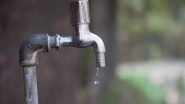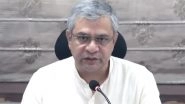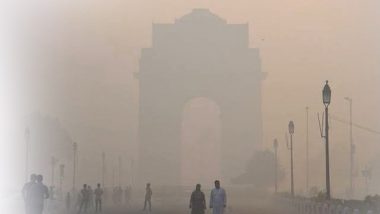July 21, New Delhi: Much ahead of the air pollution season in north-west India, especially in Delhi-NCR, scientist have come up with a Decision Support System (DSS) that will not just help zero in on the exact sources contributing to Delhi's pollution, but also predict practical scenarios in winters.
The practical scenario prediction will include the level of pollution if a certain sector is shut down or sources from a certain area/district are controlled and this will help the government decide which sector to shut down or where to reduce activity in view of the prevailing air quality in Delhi. Delhi Sees Highest Increase of NO2 in Air Pollution in Last 1 Year
Apart from Delhi, there are 19 districts around the national capital, sources from which affect pollution levels in Delhi. This latest model can help avoid trial and error and blind decisions.
The model, developed by scientists from the Indian Institute of Tropical Meteorology (IITM) in Pune, will be operationalised by October, IITM's Project Lead, Wifex/AQEWS, Sachin Ghude, told IANS.
"We have developed a model to derive the contribution of each source of pollution from Delhi and 19 surrounding districts. We have tagged each source, giving weightage to each district and each activity that will help us arrive at an estimate to decide the contribution of the respective district, respective activity to Delhi's air pollution," Ghude said.
For instance, this model can help identify the contribution of the transport sector in the given day's AQI level or for that matter, what is the contribution of biomass burning from Punjab or Haryana, what is the contribution of industry or even a particular district, say Meerut's contribution, all such estimates can be derived from this model.
This will help the authorities target the relevant sector or district for preventive action, the scientist said.
Since 2018, IITM has been issuing three-day and 10-day air quality forecast for Delhi, based on which the Central Pollution Control Board (CPCB) takes decisions vis-a-vis action to be taken, e.g., halt construction activity or stop vehicular movement etc.
Now, the idea is to zero in on the exact sources of pollution -- industrial sources, traffic sources, residential fuel burning, road dust etc. -- which to control on top priority, and which can be secondary priority.
Delhi is among the most polluted cities in the world. The year 2020 was an aberration with regard to air quality as the pandemic-induced lockdown provided much needed respite, albeit temporarily.
A June 2021 study titled ‘Bending Delhi's Air Pollution Curve: Learnings from 2020 to Improve 2021' by the Council on Energy, Environment and Water (CEEW) showed that the annual average PM2.5 concentration in 2020 was 93 Aug/m3, which is more than twice the permissible limit for PM2.5 in India.
"Despite low activity levels for close to eight months (March to November) in 2020, Delhi residents were exposed to National Ambient Air Quality Standard's (NAAQS) non-compliant air for more than half of the year," the study said.
Delhi had observed 92 severe and very poor air quality days in the winter of 2020 compared to 80 such days in 2019. Compared to an average PM2.5 concentration of 161 Ig/m3 in 2019, between October and November 2020, this value was 172 Ig/m3.
It further shot up to an average level of 192 Ig/m3 in the period between December 2020 and January 2021 compared to 178 Ig/m3 during the same period previous year, the study pointed out.
Contributions from stubble burning and household emissions from cooking and space heating were significant fractions of the pollution pie, it said.
The IITM has been using the source mapping done by The Energy and Resources Institute (TERI). In that 2018 study, transports, industries, power plants, residential, agricultural burning, road dust, constructions, DG sets, refuge burning, crematoria, restaurants, airports, waste incinerators, landfill fires and solvents formed the different sectors in the annual emission inventory of pollutants in Delhi and NCR.
TERI is already carrying out a new survey for source mapping and "if the findings of the new survey are available by October, we will use those to give estimates in winter season," Ghude said.
(The above story first appeared on LatestLY on Jul 21, 2021 06:29 PM IST. For more news and updates on politics, world, sports, entertainment and lifestyle, log on to our website latestly.com).













 Quickly
Quickly


